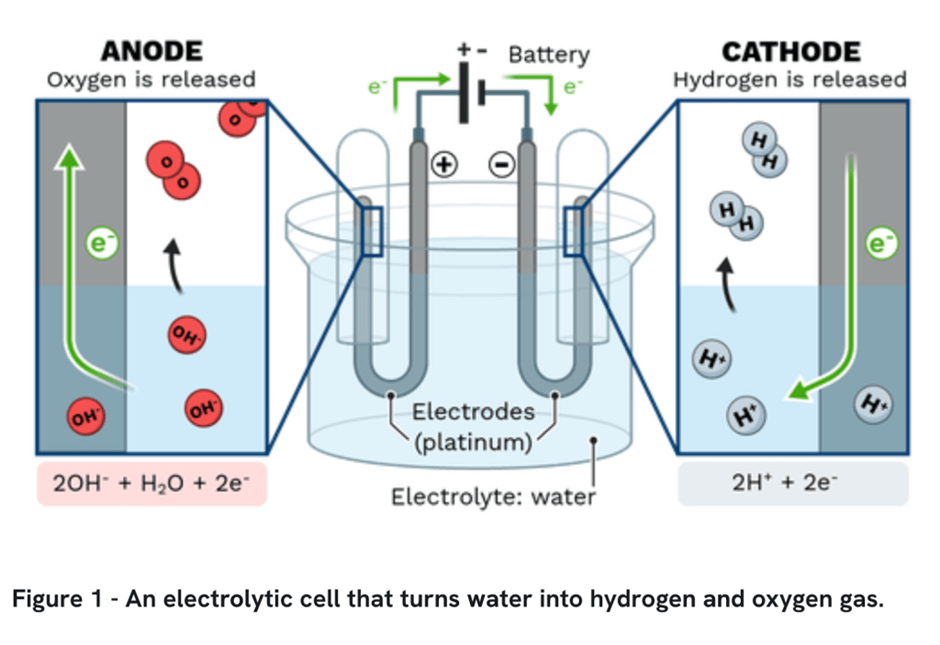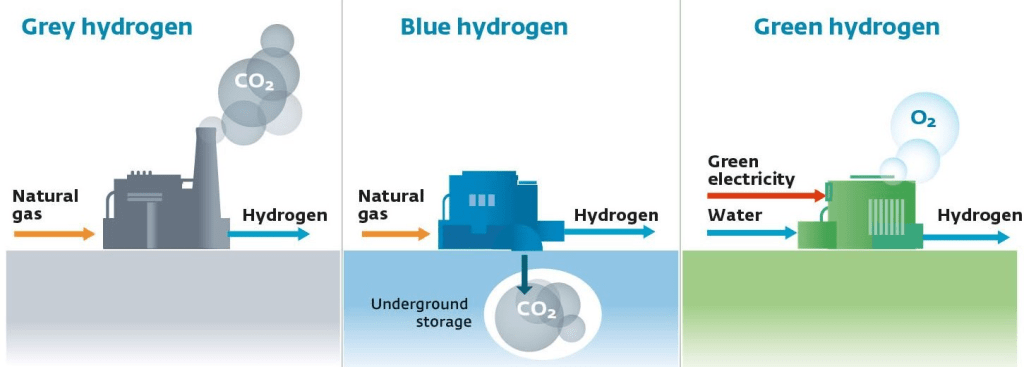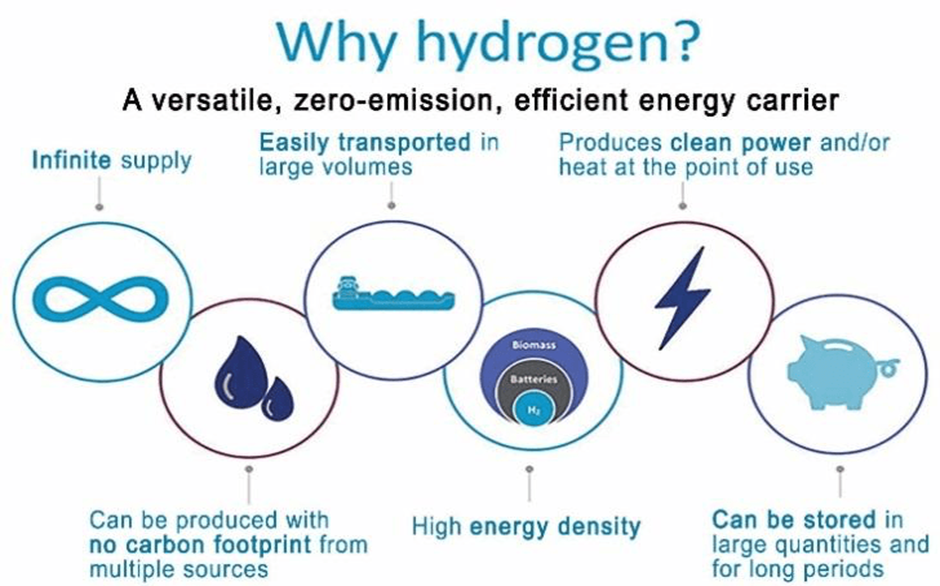- Courses
- GS Full Course 1 Year
- GS Full Course 2 Year
- GS Full Course 3 Year
- GS Full Course Till Selection
- Online Program
- GS Recorded Course
- NCERT (Recorded 500+ Hours)
- Polity Recorded Course
- Geography Recorded Course
- Economy Recorded Course
- AMAC Recorded Course
- Modern India, Post Independence & World History
- Environment Recoded Course
- Governance Recoded Course
- Science & Tech. Recoded Course
- International Relations and Internal Security Recorded Course
- Disaster Management Module Course
- Ethics Recoded Course
- Essay Recoded Course
- Current Affairs Recoded Course
- CSAT
- 5 LAYERED ARJUNA Mentorship
- Public Administration Optional
- ABOUT US
- OUR TOPPERS
- TEST SERIES
- FREE STUDY MATERIAL
- VIDEOS
- CONTACT US
Green Hydrogen: India's Path to a Sustainable Energy Future
Green Hydrogen: India's Path to a Sustainable Energy Future
07-09-2024
The Ministry of New and Renewable Energy (MNRE) has exempted export-oriented green hydrogen projects from its domestic solar module manufacturer list (ALMM), allowing them to use cheaper imported solar modules.
Major Highlights:
- The ALMM (Approved List of Models and Manufacturers) is a registry of domestically produced solar modules approved by the Indian government to promote the use of locally made products in solar energy projects.
- By granting the exemption to export-oriented green hydrogen projects from ALMM, the MNRE allows green hydrogen projects set up for export purposes (in Special Economic Zones or Export-Oriented Units) to use imported solar modules instead of the more expensive domestic ones.
- This exemption is intended to reduce the production cost of green hydrogen, making it more competitive with cheaper, carbon-intensive grey hydrogen. The lower costs can help green hydrogen producers compete globally and drive export growth.
- In addition to cost-reduction measures, MNRE is supporting the green hydrogen sector through initiatives like the SIGHT programme, with Rs 17,490 crore allocated for electrolyser manufacturing and green hydrogen production.
- The ministry has also waived transmission charges for 25 years and exempted green hydrogen projects from prior environmental clearance. Further, it has notified 73 green hydrogen standards for production and application of Green hydrogen.
Hydrogen as an alternative fuel
- Hydrogen is the lightest and the most abundant element in the universe. On Earth, it is found in compounds like water or hydrocarbons. However, Hydrogen is not present in the free state. Therefore, it must be created and stored before it tends to be utilised.
- Hydrogen fuel is produced by splitting water (H₂O) into its components: hydrogen (H₂) and oxygen (O₂). The hydrogen gas can be used to power fuel cells, which generate electricity through a chemical reaction between hydrogen and oxygen, releasing only water vapour as a byproduct.

- Owing to its clean combustion, producing only water as a byproduct, makes it an attractive option for reducing greenhouse gas emissions and combating climate change. Thus, Hydrogen is gaining significant attention as a potential alternative fuel.
Ways of using Hydrogen as a fuel:
- Hydrogen Fuel Cell: Fuel cells based on Hydrogen and Oxygen. Produces Water as a by-product.
- Hydrogen CNG (Used as transportation fuel): Mixture of hydrogen and CNG in a fixed ratio, enables Hydrogen being used as fuel in conventional engines. HCNG increases the efficiency of combustion of CNG and is less polluting.
Types of Hydrogen
- Hydrogen can be produced from a variety of resources, such as natural gas, nuclear power, biomass, and renewable power like solar and wind. Hydrogen is an invisible gas. Depending on the type of production used, different colour names are assigned to the hydrogen.

Some common types of Hydrogen
- Grey hydrogen: Grey hydrogen is produced using fossil fuels such as natural gas or coal. Grey hydrogen accounts for roughly 95% of the hydrogen produced in the world today.
- The two main production methods are steam methane reforming and coal gasification. Both of these processes release carbon dioxide (CO2).
- If the carbon dioxide is released into the atmosphere, then the hydrogen produced is referred to as grey hydrogen.
- Blue Hydrogen: Blue hydrogen is similar to grey hydrogen, except that most of the CO2 emissions are sequestered (stored in the ground) using carbon capture and storage (CCS).
- Capturing and storing the carbon dioxide instead of releasing it into the atmosphere allows blue hydrogen to be a low-carbon fuel.
- Blue hydrogen is a cleaner alternative to grey hydrogen, but is expensive since carbon capture technology is used.
- Green Hydrogen: Green hydrogen is hydrogen produced using electricity from clean energy sources, such as wind and solar energy, which do not release greenhouse gases when generating electricity.
- Green hydrogen is made when water (H2O) is split into hydrogen (H2) and oxygen (O2) via a process known as electrolysis.
- Pink Hydrogen: Pink hydrogen is produced through electrolysis of water but using energy from nuclear power, which does not produce any carbon dioxide emissions.
- Pink hydrogen facilities can achieve a high-capacity factor due to the steady base-load profile of nuclear power (involving both stability and density), as compared to the intermittent supply from renewable sources (solar, wind).
- Turquoise Hydrogen: Turquoise hydrogen is made using a process called methane pyrolysis. In this process methane is split into hydrogen and solid carbon with heating in reactors or blast furnaces.
Utility of Hydrogen fuel

- Abundant in nature and highly efficient. E.g., Hydrogen is two to three times more efficient than petrol.
- Hydrogen is a versatile fuel which can be transported as gas by pipelines or in liquid form like LNG and can be transformed into electricity by fuel cells.
- Strengthen energy security by being a direct replacement of fossil fuels.
- Green hydrogen can be stored for a long period and can be used when renewable energy is not available for power generation with stationary fuel cells or hydrogen-ready gas turbines.
- Green hydrogen is a clean fuel which can decarbonise a range of sectors including iron and steel, chemicals, and transportation.
- Facilitate acceleration to the green economy. Presently, hydrogen is used in the refining industry, ammonia making, methanol manufacturing, steel making industries etc.
Challenges and Solution in using Hydrogen as a fuel
|
Challenges |
Solution |
|
|
|
|
|
|
|
|
|
|
National Hydrogen Mission

- The National Green Hydrogen Mission was launched in January 2023, with an outlay of Rs. 19,744 crores from FY 2023-24 to FY 2029-30.
- Aim: To develop India into a global hub for production, usage and export of Green hydrogen and its derivatives.
- The scheme envisages generation of hydrogen from green power sources with a target of 5MMT production capacity of Green Hydrogen per annum.
- Initiative of: Ministry of New and Renewable Energy (MNRE).
Must Check: Best IAS Coaching In Delhi
UPSC Prelims Result 2024 Out: Expected Cut Off & Other Details, UPSC Prelims 2024 Answer with Explanation, Daily Prelims Quiz, Daily Current Affairs, MONTHLY CURRENT AFFAIRS TOTAL (CAT) MAGAZINE, Best IAS Coaching Institute in Karol Bagh, Best IAS Coaching Institute in Delhi, Daily Mains Question Answer Practice, ENSURE IAS UPSC Toppers, UPSC Toppers Marksheet, Previous Year Interview Questions, UPSC Syllabus




